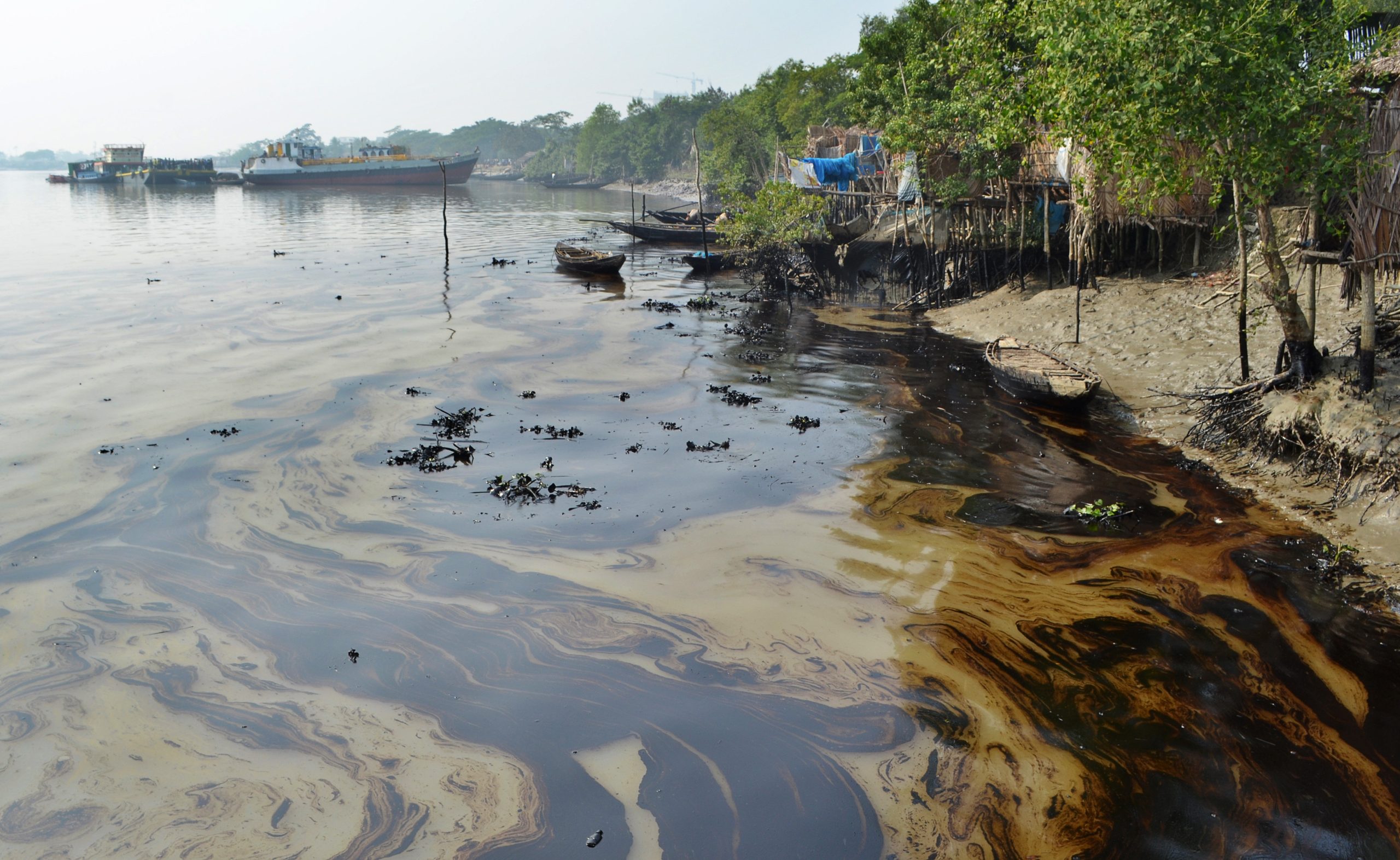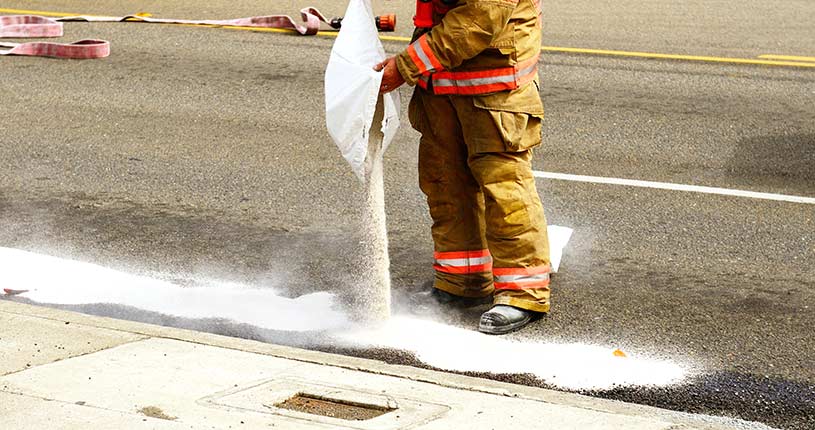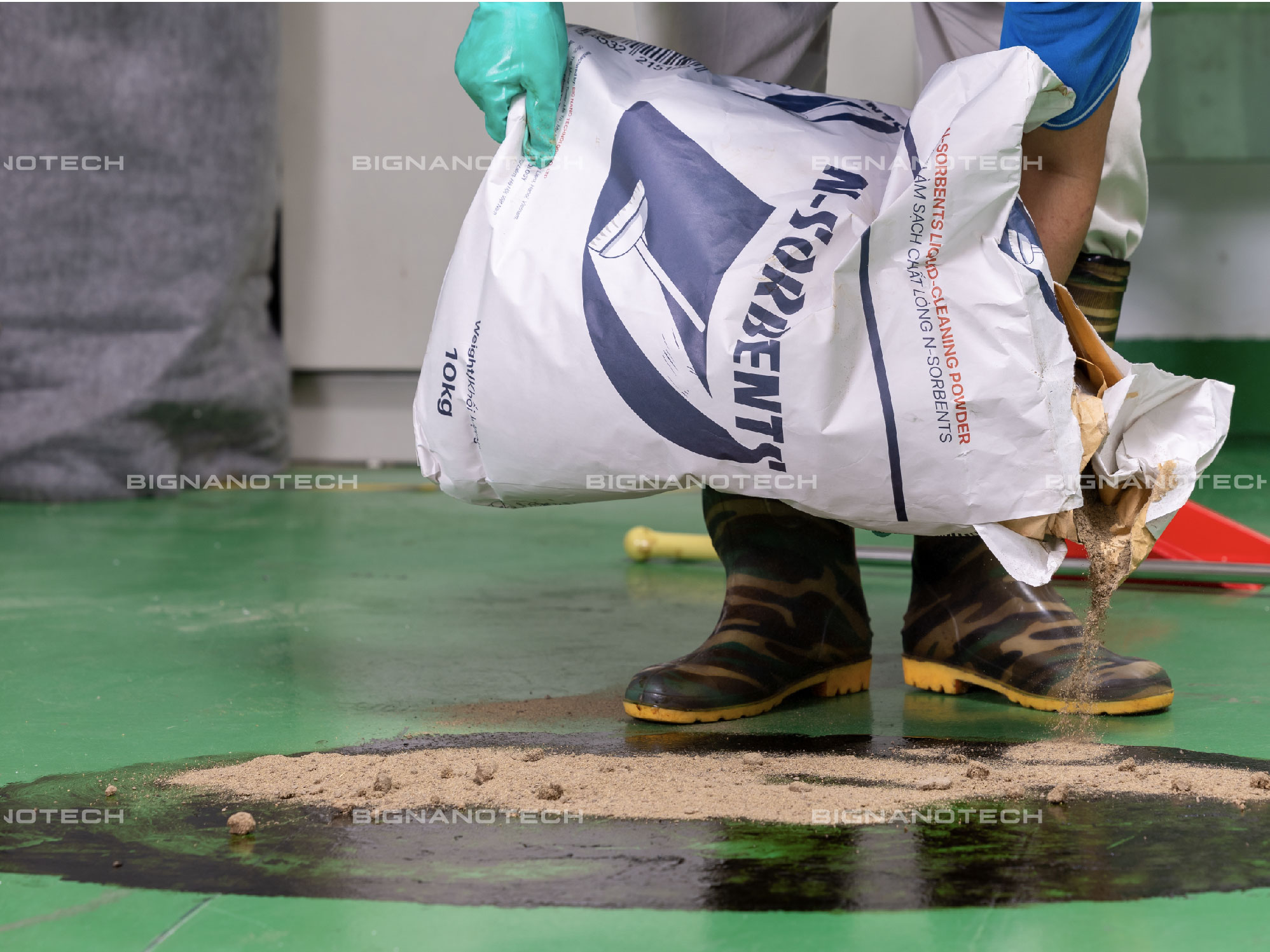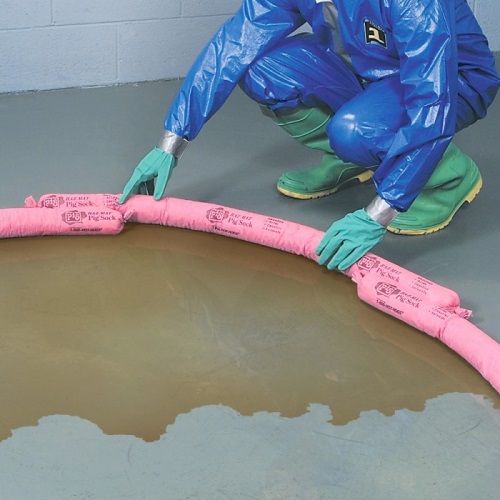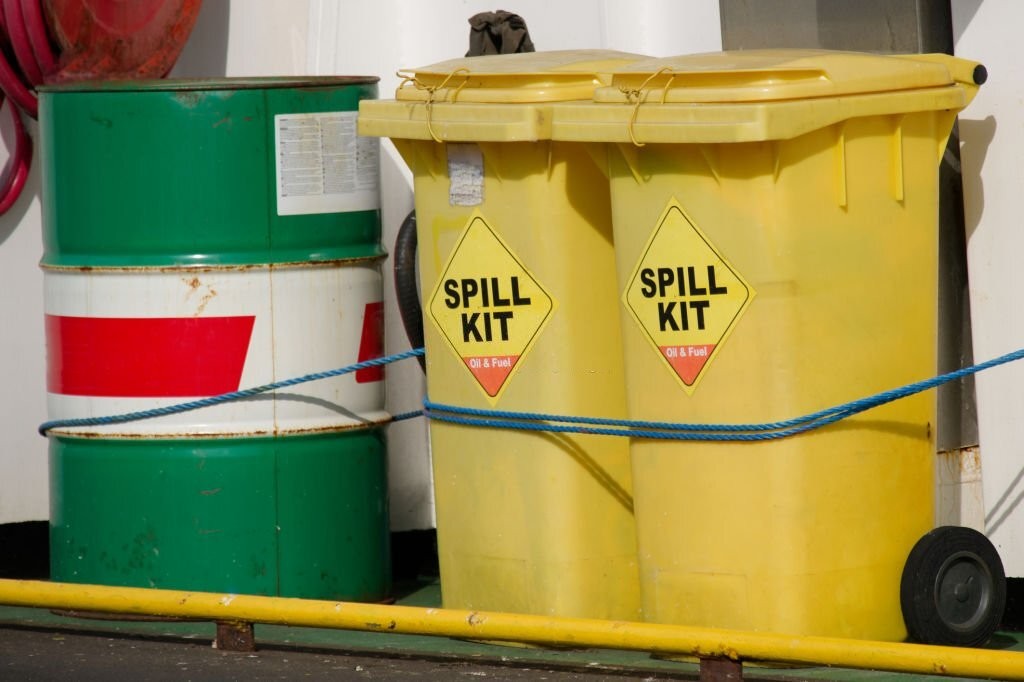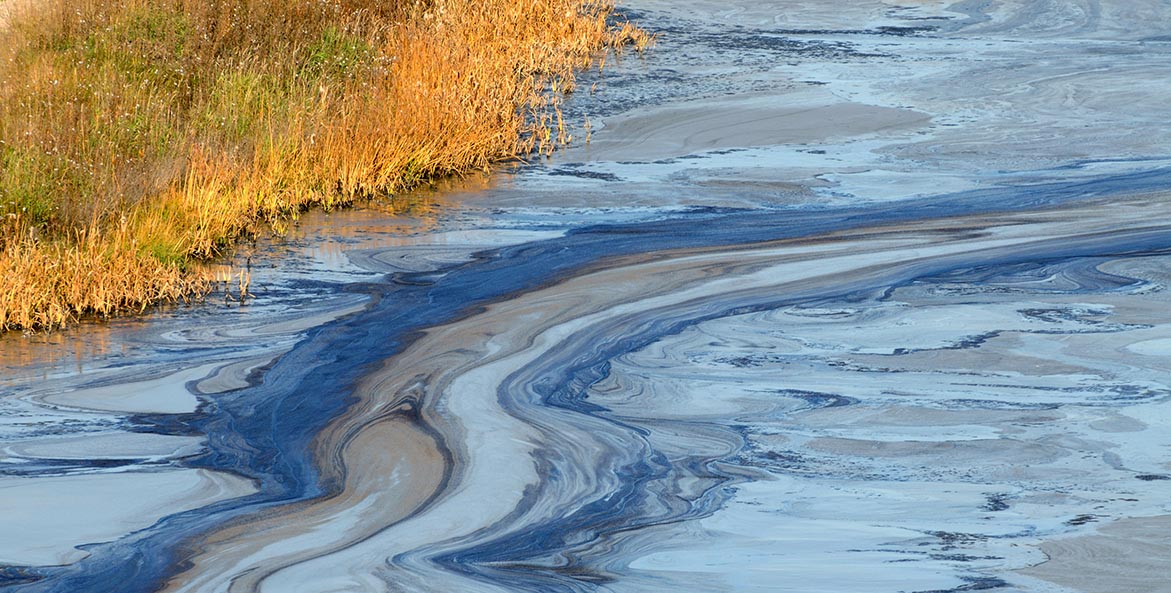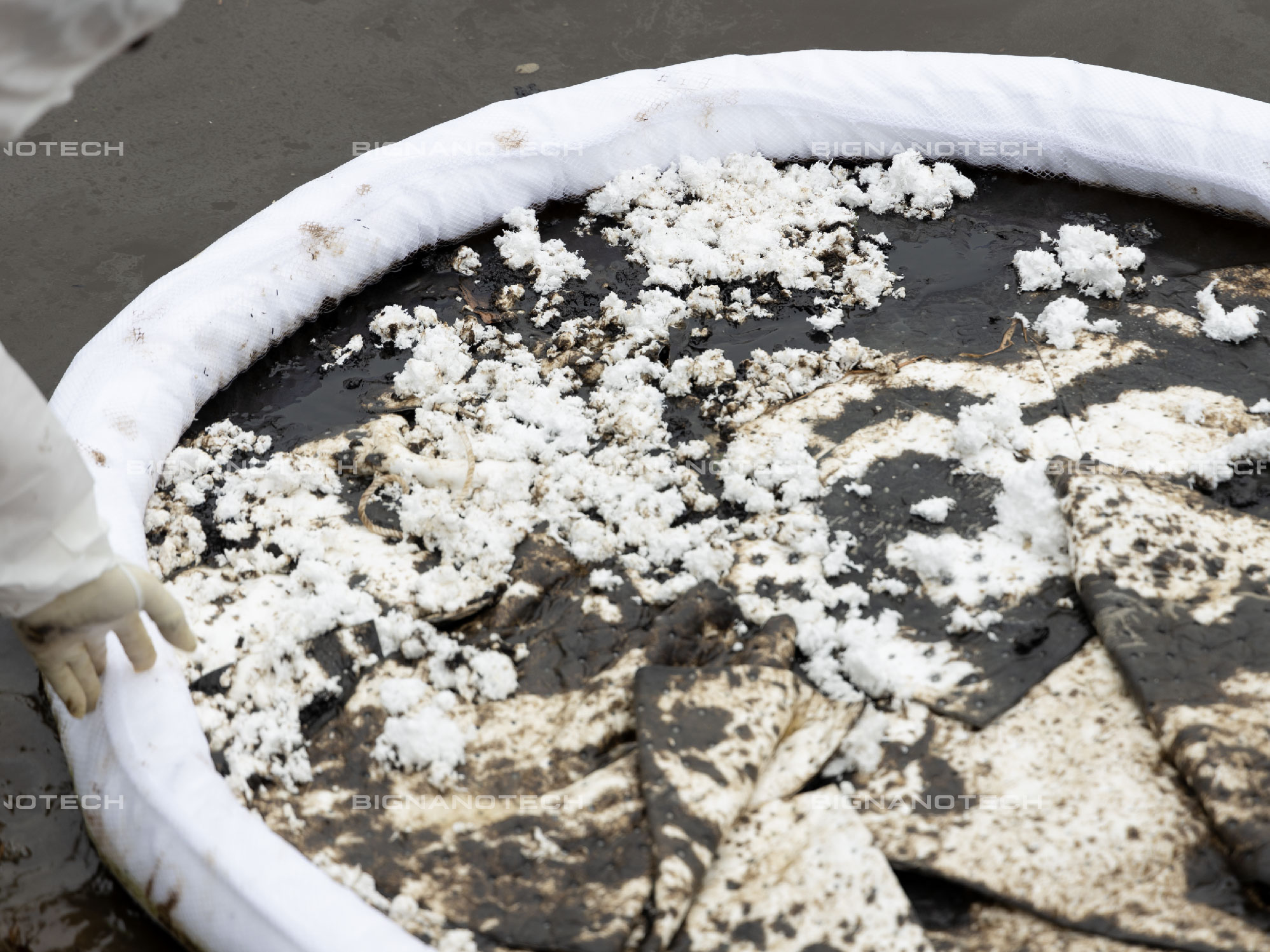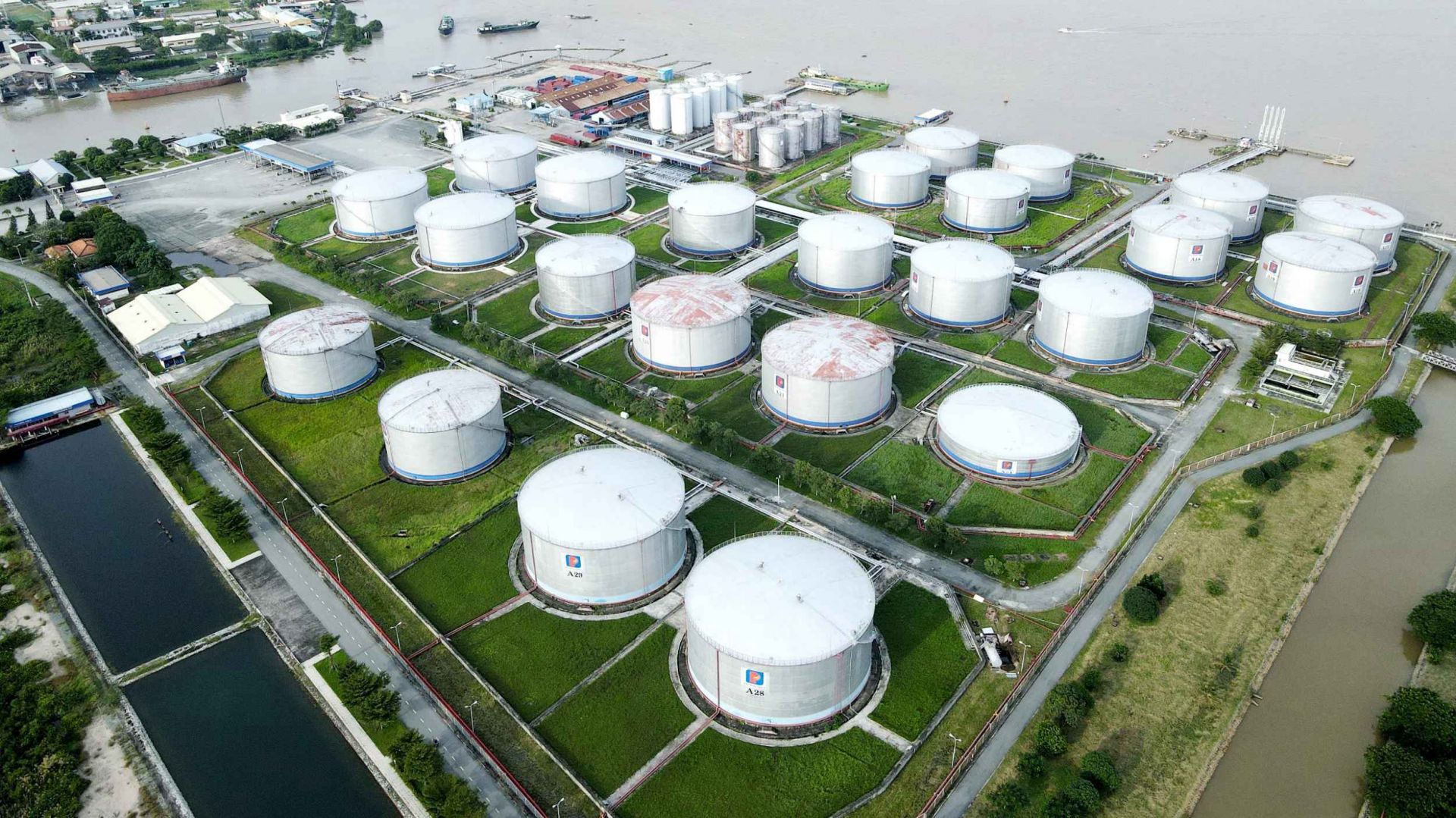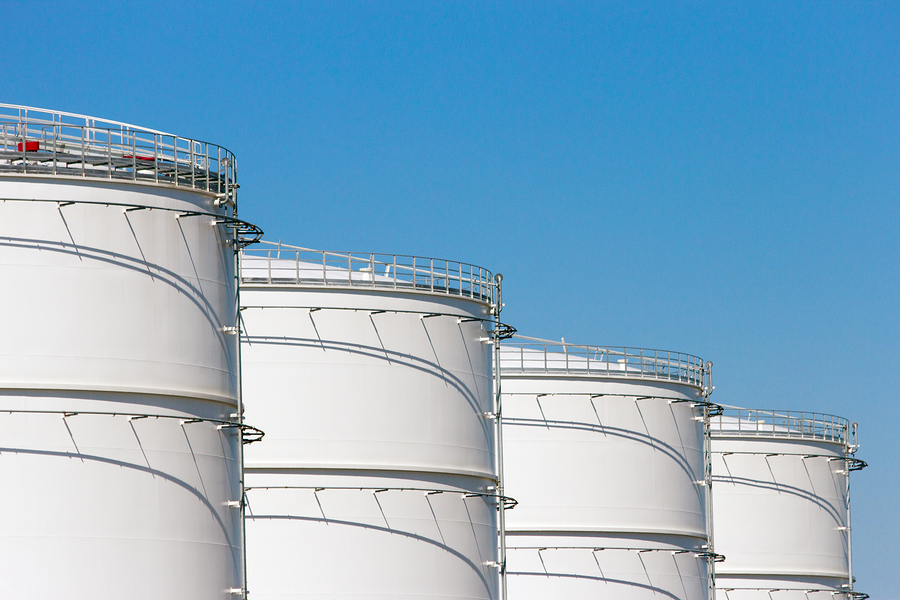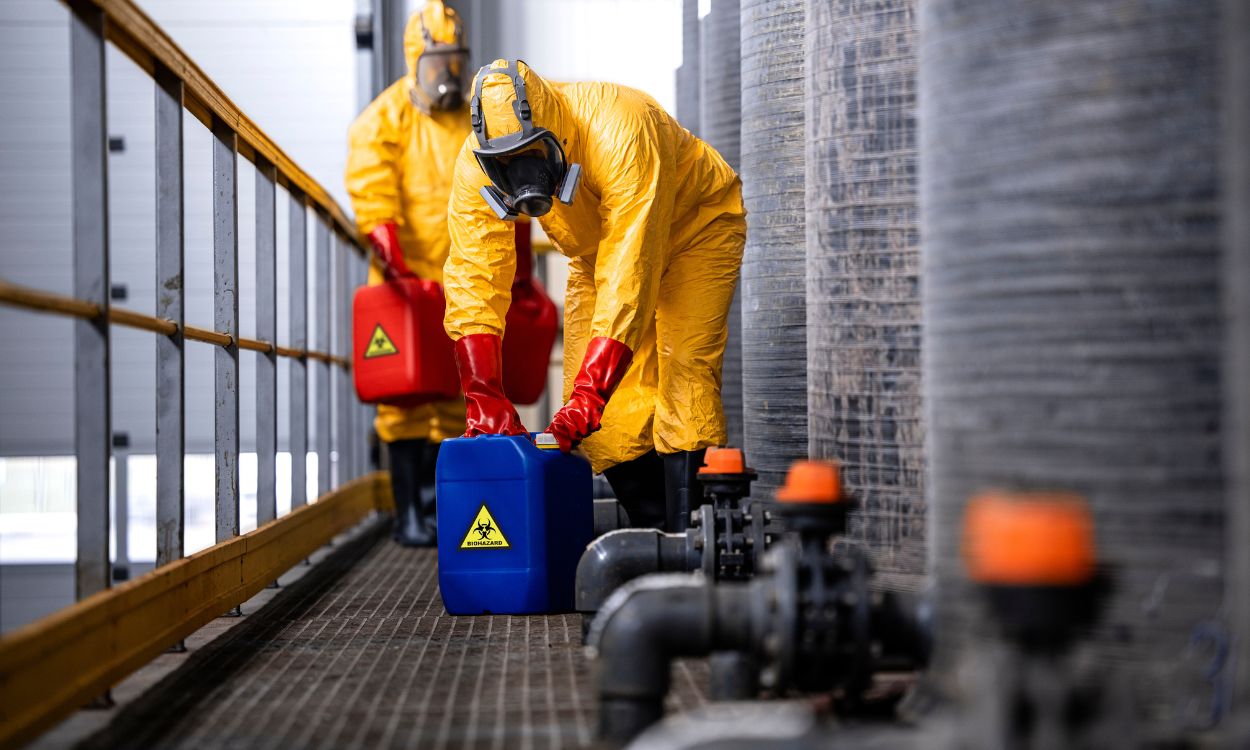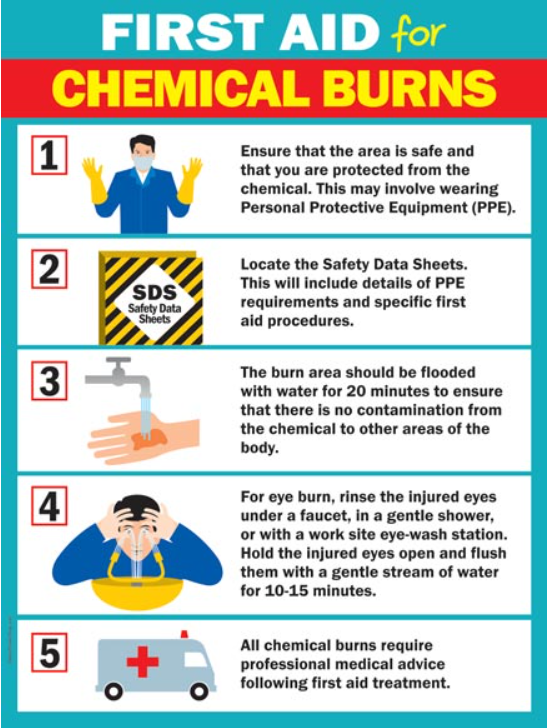In today’s world, where environmental awareness is at an all-time high, efficiently managing oil spills is crucial, especially in sensitive aquatic ecosystems like rivers. Oil spills can devastate marine life, compromise water quality, and lead to long-term ecological damage. This is where high-quality oil absorbent products, like oil absorbent pads, booms, and rolls, play a vital role in rapid and effective oil spill cleanup. In this guide, we’ll dive into the best methods to clean up oil spills in rivers, with a focus on oil absorbent products and how BIGNANOTECH’s specialized materials can help make a difference.
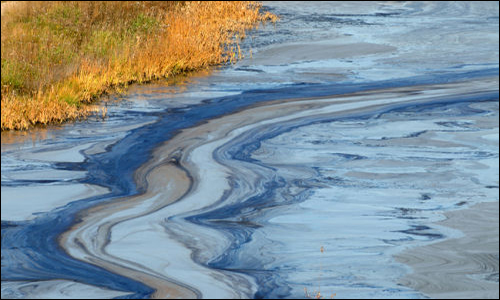
Why Are Oil Absorbent Products Essential for River Oil Spill Cleanups?
When oil spills in rivers, it can spread quickly, especially in flowing water. Using oil absorbent products helps contain and absorb the oil, preventing it from spreading further and minimizing environmental damage. These products are specifically engineered to attract and hold oil while repelling water, making them ideal for river and other waterway cleanup efforts.
Key Steps for Effective Oil Spill Cleanup in Rivers
- Assess the Spill Size and Location
The first step in river oil spill response is to assess the spill’s size, location, and current movement. This allows responders to determine the best approach, such as whether to contain it with booms or absorb it directly with pads or rolls. - Contain the Spread of Oil
Containing the oil prevents it from spreading further downstream. Oil absorbent booms are ideal for this task, creating a barrier that keeps the oil within a controlled area. In some cases, multiple booms may be deployed to increase containment effectiveness. - Apply Oil Absorbent Products
Once the spill is contained, oil absorbent pads, rolls, and socks can be applied directly to the oil to absorb it efficiently. BIGNANOTECH’s oil absorbent products are designed for high absorbency, ensuring that maximum oil is absorbed with minimal material waste. - Remove and Dispose of Contaminated Absorbents Safely
After the oil has been absorbed, it’s essential to remove the contaminated absorbents from the river carefully. BIGNANOTECH recommends using appropriate disposal methods that comply with environmental regulations to prevent further contamination. - Monitor the Affected Area
Following cleanup, regular monitoring is essential to ensure that no residual oil is left in the river, which could cause harm to the ecosystem. Implementing oil skimmers or continuing to use absorbent pads may be necessary for ongoing containment.
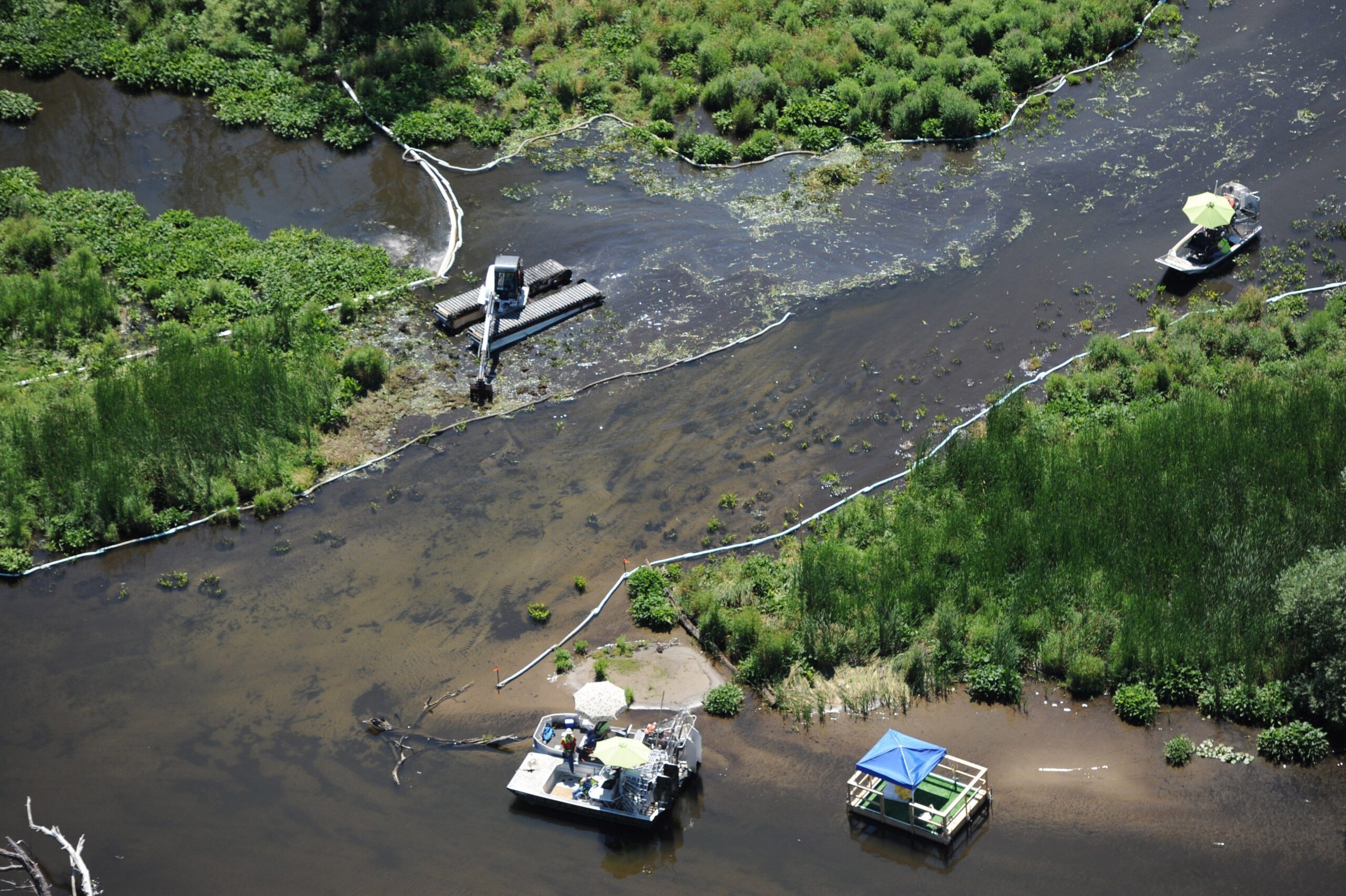
Top Oil Absorbent Products for River Cleanup
- Oil Absorbent Pads
Oil absorbent pads are lightweight, portable, and easy to use, making them a popular choice for quick cleanups. Designed to absorb oil-based fluids while repelling water, they are ideal for use on the surface of rivers where oil floats. BIGNANOTECH’s oil absorbent pads offer a high absorption rate and are made to resist tearing, ensuring that they remain effective even in moving water. - Oil Absorbent Booms
Oil absorbent booms are designed to contain and control the spread of oil in water. These cylindrical absorbent barriers float on the water surface and can be deployed around the spill area to prevent oil from dispersing downstream. BIGNANOTECH’s oil absorbent booms are highly durable, easy to deploy, and capable of absorbing large volumes of oil. - Oil Absorbent Rolls
Oil absorbent rolls are ideal for larger spills, as they can cover a wide area and are highly versatile. Rolls can be cut to size for use in various settings, making them perfect for emergency responses where flexibility is essential. BIGNANOTECH’s oil absorbent rolls are crafted from high-performance materials that maximize oil absorption while maintaining buoyancy. - Oil Absorbent Socks
Oil absorbent socks are flexible, allowing them to be placed in difficult-to-reach areas. These socks can wrap around docks, rocks, or even other equipment to prevent the spread of oil. BIGNANOTECH’s oil absorbent socks are highly adaptable and come in various lengths to suit different cleanup needs. - Oil Skimmers and Spill Kits
BIGNANOTECH offers oil spill kits that include a combination of absorbent pads, booms, and other essential tools. These kits provide a comprehensive solution for oil spill response, equipping cleanup crews with everything needed to handle a spill efficiently. Additionally, oil skimmers can be used alongside absorbents to collect large volumes of oil from the water surface.


Why Choose BIGNANOTECH’s Oil Absorbent Products?
- Advanced Absorption Technology
BIGNANOTECH’s oil absorbent products utilize advanced materials that enhance oil absorption rates, allowing for rapid cleanup and maximum oil retention. Their specialized construction ensures that they absorb oil efficiently while remaining buoyant on the water surface. - Environmentally Responsible
BIGNANOTECH is committed to environmental sustainability. Our absorbent products are made from eco-friendly materials, ensuring that they perform effectively without contributing to environmental pollution. - Durability and Reusability
BIGNANOTECH’s oil absorbent pads, booms, and rolls are designed for durability, ensuring that they remain intact even in challenging conditions. Many of our products are reusable, making them a cost-effective and eco-friendly choice. - Customizable Options
We understand that each oil spill is unique. BIGNANOTECH offers various absorbent products in multiple sizes and absorption capacities, providing tailored solutions for diverse spill scenarios.

Additional Tips for Oil Spill Management in Rivers
- Act Quickly: Speed is crucial in oil spill response. The faster you contain and absorb the oil, the less impact it will have on the river ecosystem.
- Use Absorbents Only for Oil: Oil absorbent products are specifically designed for oil-based liquids. Avoid using them for water-based or hazardous chemicals.
- Coordinate with Local Authorities: For larger spills, contacting local environmental agencies or emergency services can help mobilize additional resources for containment and cleanup.
Final Thoughts on Oil Spill Cleanup in Rivers
Managing oil spills in rivers requires a specialized approach and high-quality products that efficiently contain and absorb oil while preserving water quality. BIGNANOTECH’s range of oil absorbent products, including pads, booms, rolls, and spill kits, offers effective and reliable solutions for these scenarios. Investing in proper oil absorbent products can significantly reduce the environmental impact of oil spills and protect aquatic ecosystems.
For more information on BIGNANOTECH’s oil absorbent products or to find the best solution for your specific needs, visit our website or contact our customer service team. Together, we can help protect our waterways and ensure a cleaner, healthier environment for future generations.
